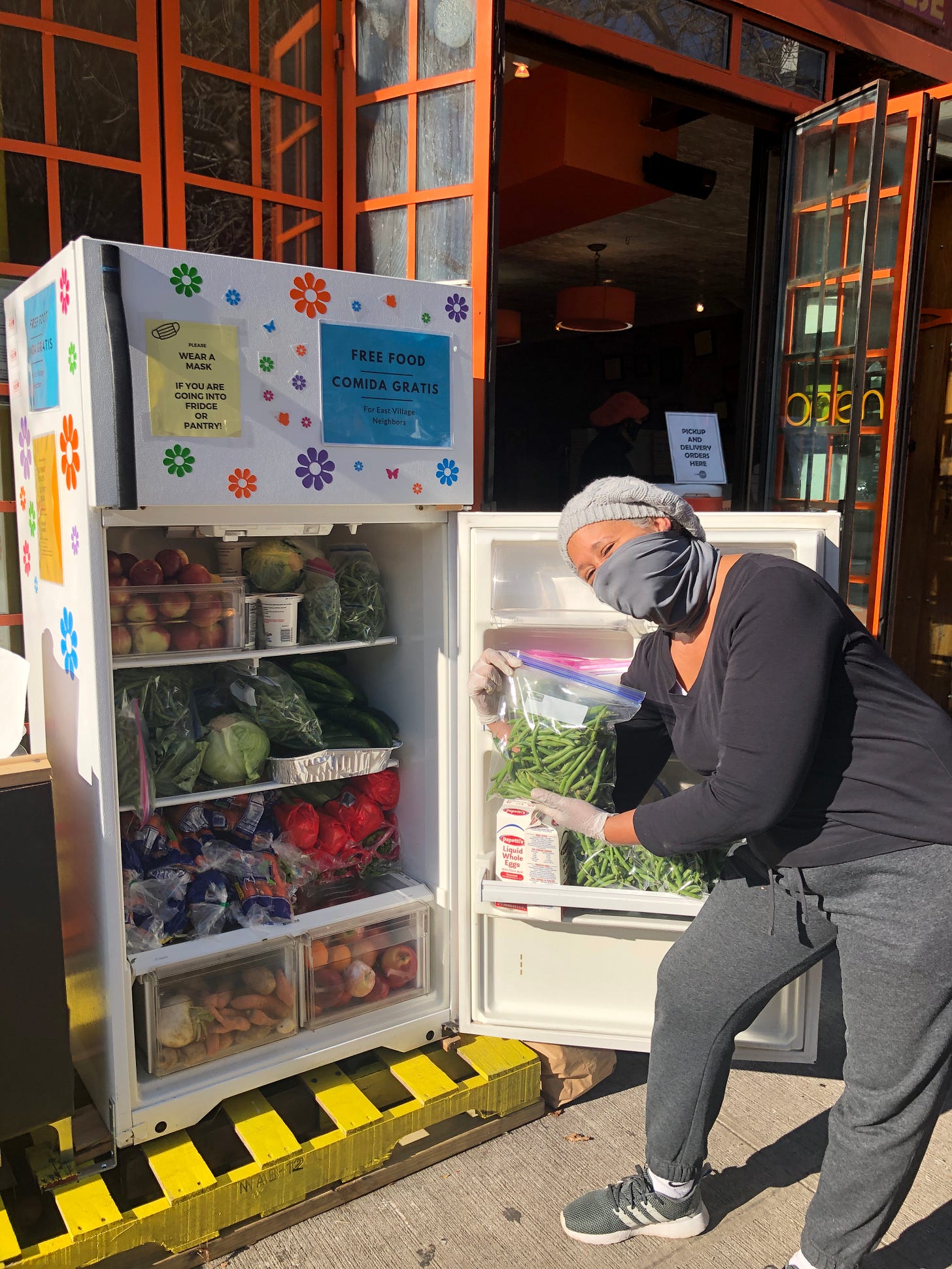Today, I’m going to put on my work hat and talk about community fridges. If you don’t know what they are, people and establishments all over the world have been plugging in refrigerators and setting up food pantries outdoors so people who have food can drop it off and people who need food can help themselves. It’s a very simple concept and it’s been feeding untold numbers of people during the pandemic.
I was fortunate enough to co-found one in the East Village in New York City in the fall of 2020. This week is actually our one year anniversary. I’m in the process of passing on my duties because I now live in New Mexico, but the fridges are as important as ever.
We’ve estimated that our one East Village fridge, which is a regular-sized fridge you’d have in your home, is feeding upwards of 2,000 people a week. That’s a lot of food in and out. It’s also a great way to help keep food out of the trash, which helps minimize food waste.
The challenge with setting up a well-run fridge is that it takes more time and organizing than a person might think. Things you need to consider if you’re thinking about starting a fridge include:
Research. Before you do anything, look at other fridges and see what they’ve done – especially look for ones in your area. Find inspiration in the efforts of those before you. Also, research any legalities of hosting a fridge in your particular area.
Partner. There are specific reasons why you should partner with a nonprofit or fiscal sponsor.
Policies and Best Practices. All throughout your efforts to launch a fridge, you’ll need to make decisions around best practices. What kind of food will you permit? How will you stock and maintain it? How will you handle challenges that will arise? These and many other questions must be answered early on to avoid potential problems down the road.
Build a Team. It’s nearly impossible to launch and maintain the fridge all on your own, so you need to find, recruit and train team leaders as well as volunteers to help with your effort. There are many responsibilities to take on – managing volunteers, finances, fundraising, social media, food donations, etc. It’s helpful to start with one or two other team leaders/co-founders and to build from there.
The Fridge. After finding a fridge and the right location to plug it in, you need to maintain it and keep it stocked. Find out what your community needs are – are more people interested in prepared food like sandwiches or would they prefer ingredients to make their own meals? Or perhaps you need food for a combination of the two. When you launch, spend time at the fridge and speak with people using it to find out what they need.
Fundraising/Donations. You’ll need to raise money to help pay for electric costs, the fridge itself, and for food to put in it. Determine how you’ll accept money (Venmo, PayPal, a fundraising platform etc) and the best way to get funds from your community.
Social Media and Promotion. Build awareness of your efforts in order to get many neighbors excited about donating food (and cash!) and so those in need know the fridge is there. An Instagram account is a must have; a private Facebook group for your neighborhood is also highly recommended. And do not underestimate the effectiveness of posting physical fliers around your area.
A surprising, yet extremely rewarding, benefit of hosting a fridge is that you’ll start to feel connected to your larger community. You’ll meet neighbors who’ve been living near you for years that you hadn’t known, with different backgrounds and experiences. You’ll feel a sense of pride in your neighborhood.
If you’d like more details about starting a fridge, feel free to download my “How to Start a Community Fridge” guide.
And if you don’t want to go through the effort of starting a fridge, find out if there’s one in your community. With the holidays coming up, it’s especially important to help people who might not be able to help themselves just now. We are all in this together.






